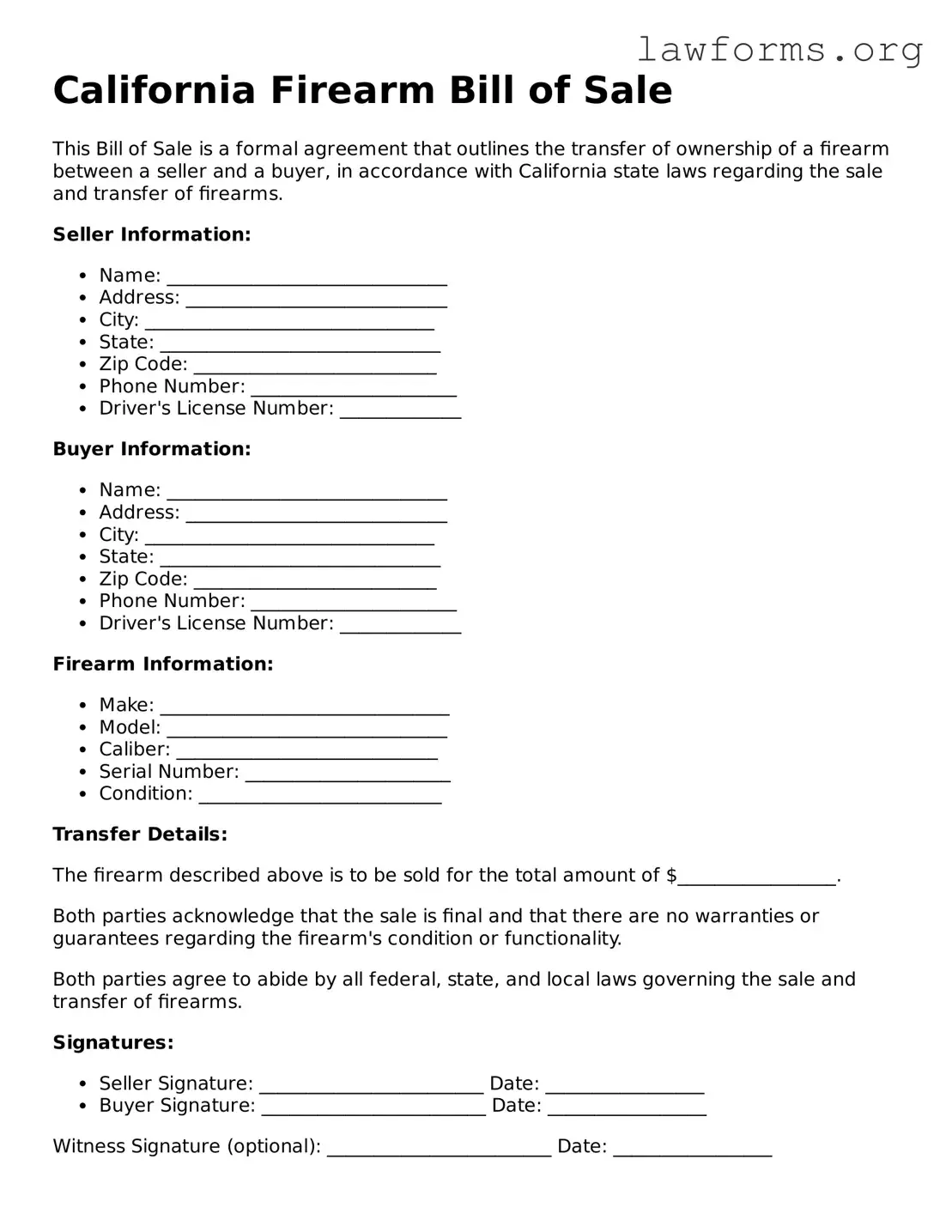California Firearm Bill of Sale
This Bill of Sale is a formal agreement that outlines the transfer of ownership of a firearm between a seller and a buyer, in accordance with California state laws regarding the sale and transfer of firearms.
Seller Information:
- Name: ______________________________
- Address: ____________________________
- City: _______________________________
- State: ______________________________
- Zip Code: __________________________
- Phone Number: ______________________
- Driver's License Number: _____________
Buyer Information:
- Name: ______________________________
- Address: ____________________________
- City: _______________________________
- State: ______________________________
- Zip Code: __________________________
- Phone Number: ______________________
- Driver's License Number: _____________
Firearm Information:
- Make: _______________________________
- Model: ______________________________
- Caliber: ____________________________
- Serial Number: ______________________
- Condition: __________________________
Transfer Details:
The firearm described above is to be sold for the total amount of $_________________.
Both parties acknowledge that the sale is final and that there are no warranties or guarantees regarding the firearm's condition or functionality.
Both parties agree to abide by all federal, state, and local laws governing the sale and transfer of firearms.
Signatures:
- Seller Signature: ________________________ Date: _________________
- Buyer Signature: ________________________ Date: _________________
Witness Signature (optional): ________________________ Date: _________________
This document serves as proof of transaction and transfer of ownership.
